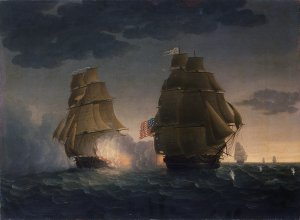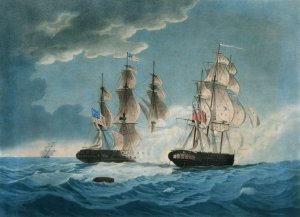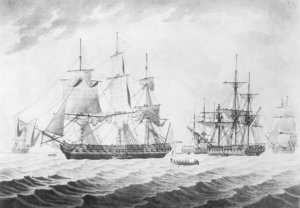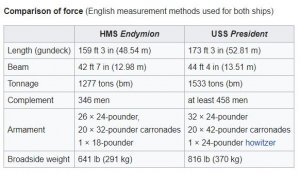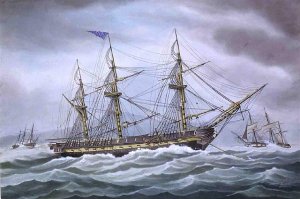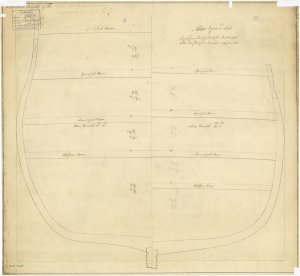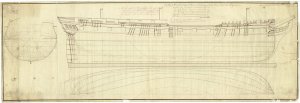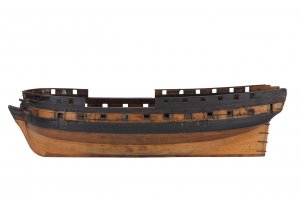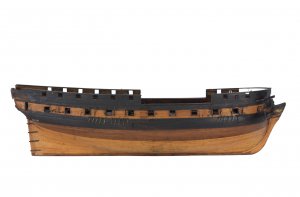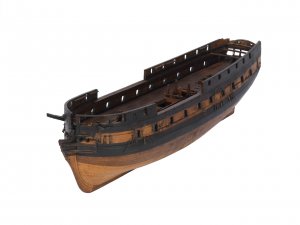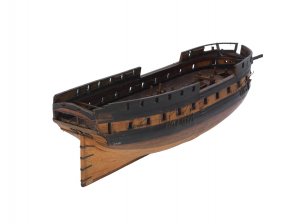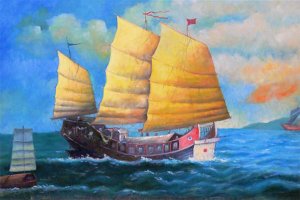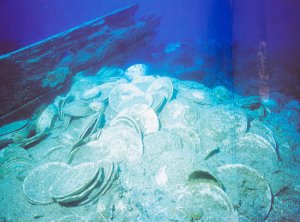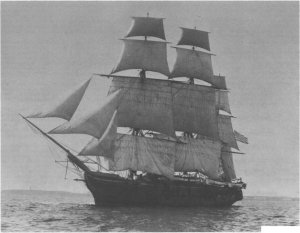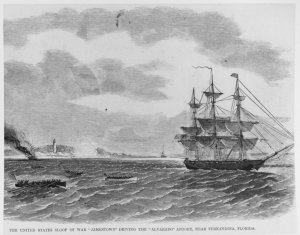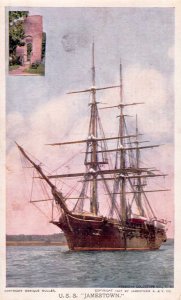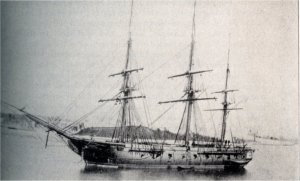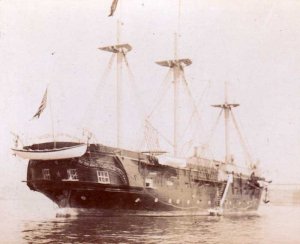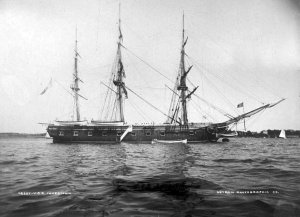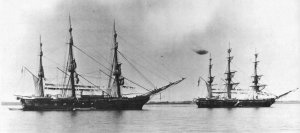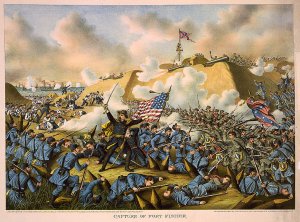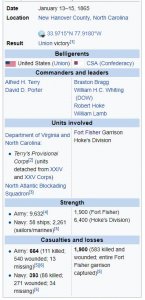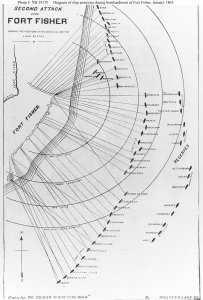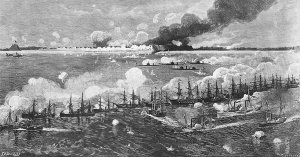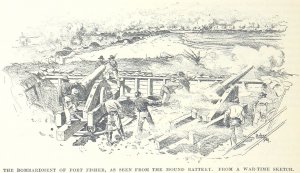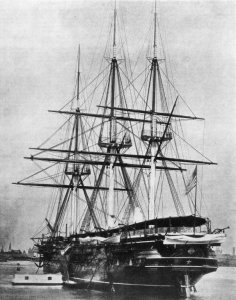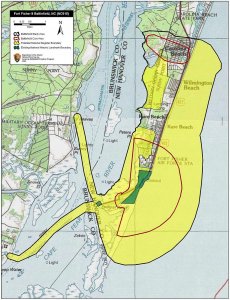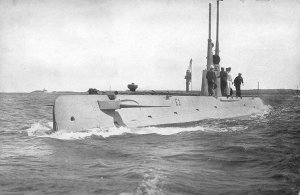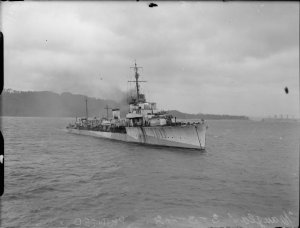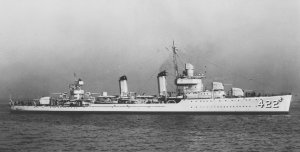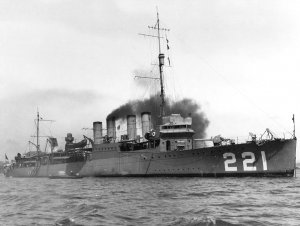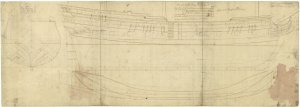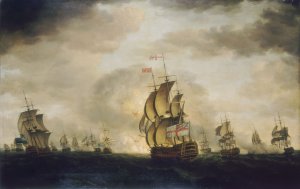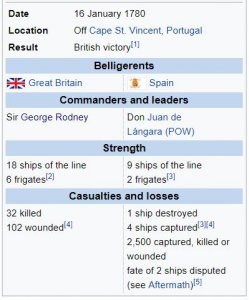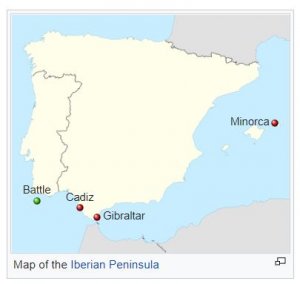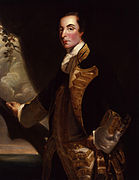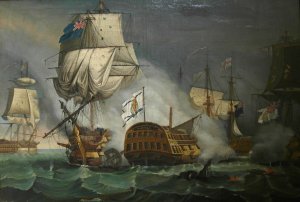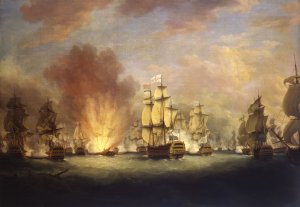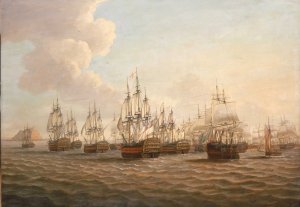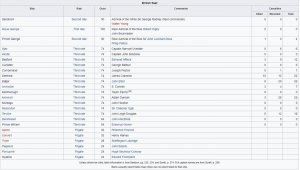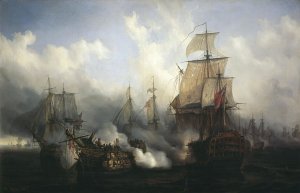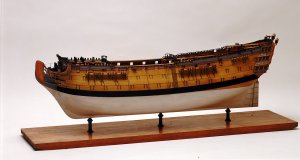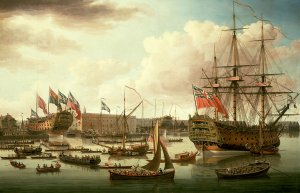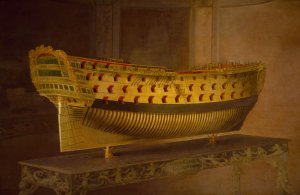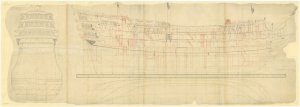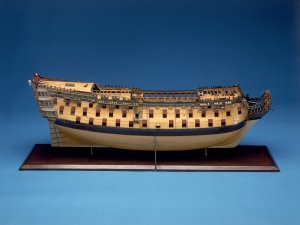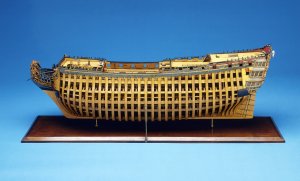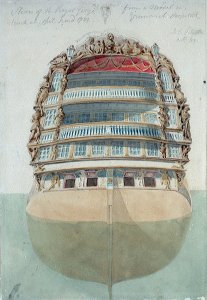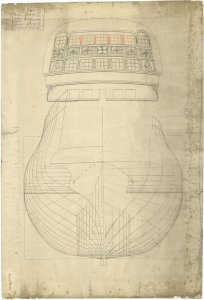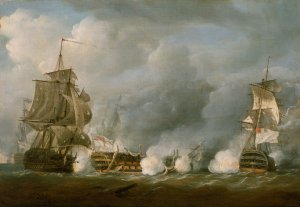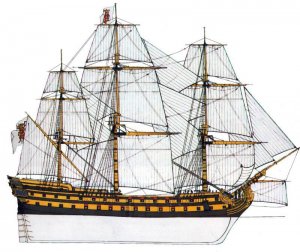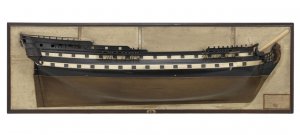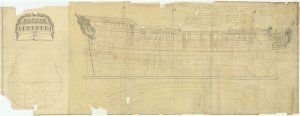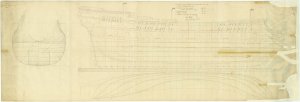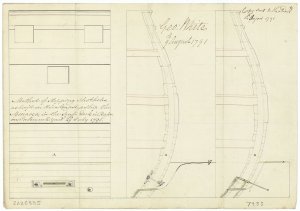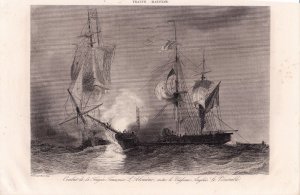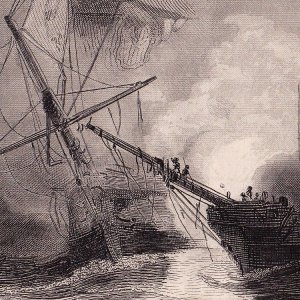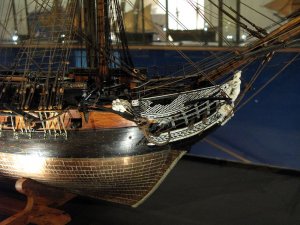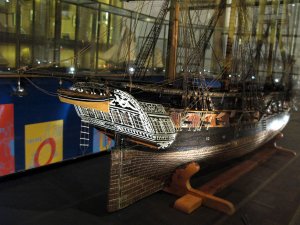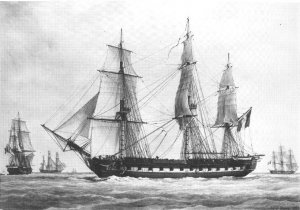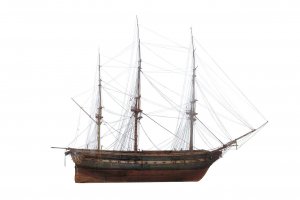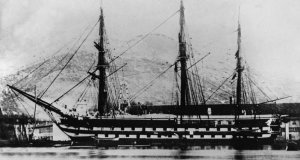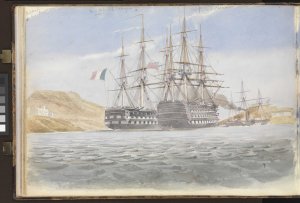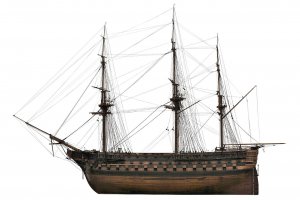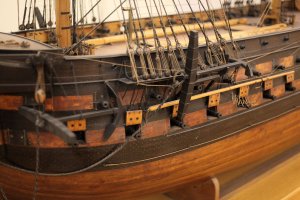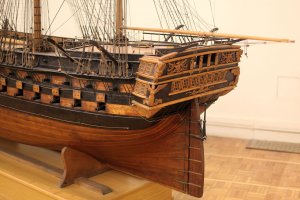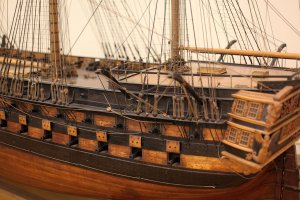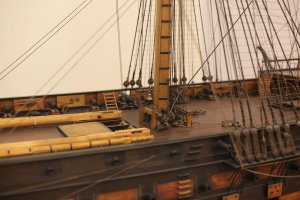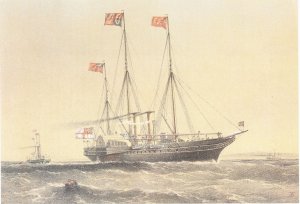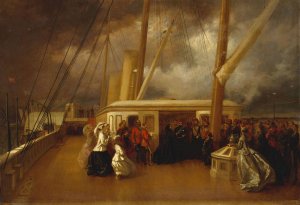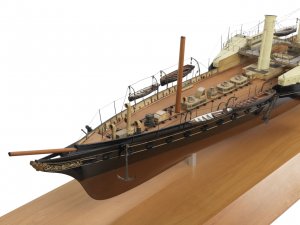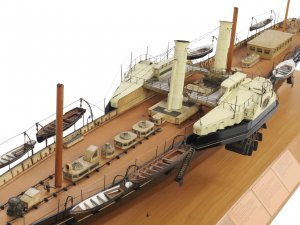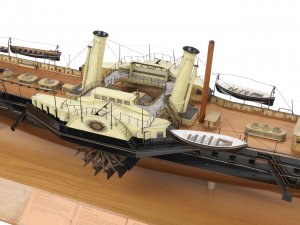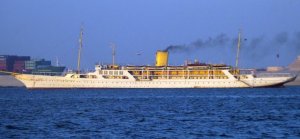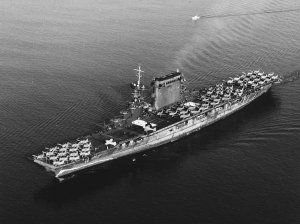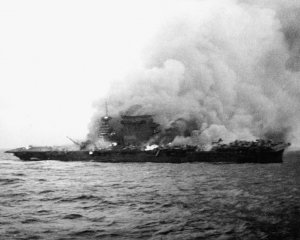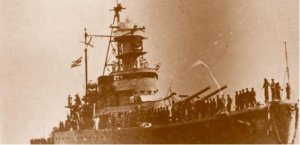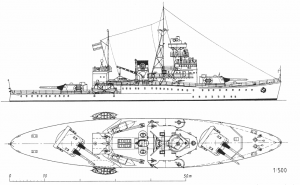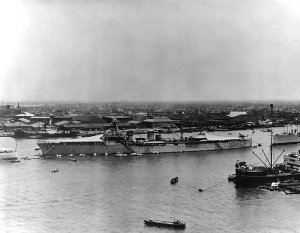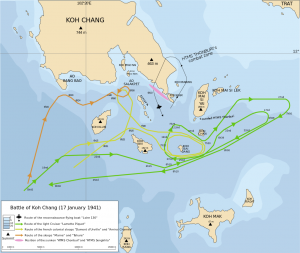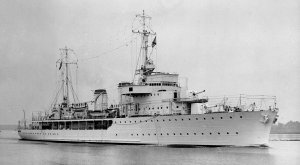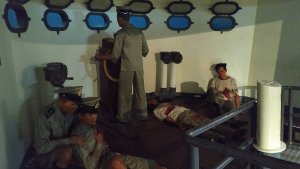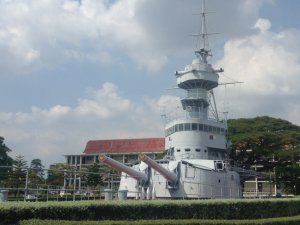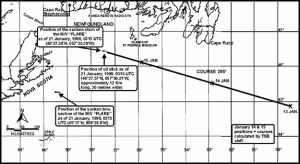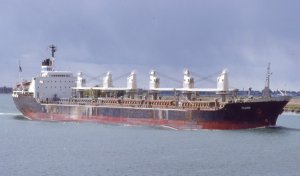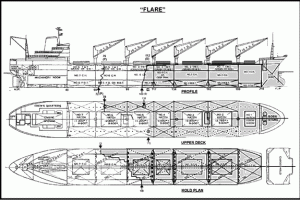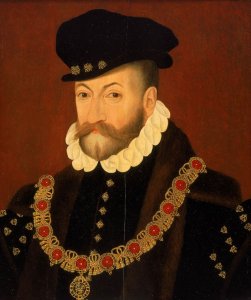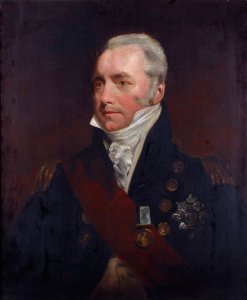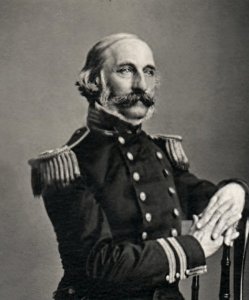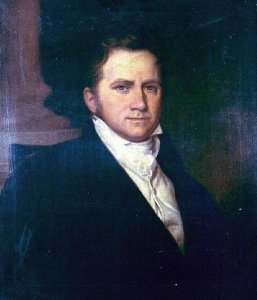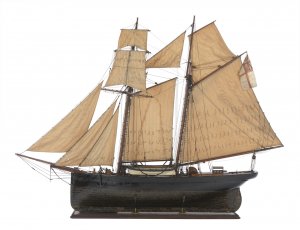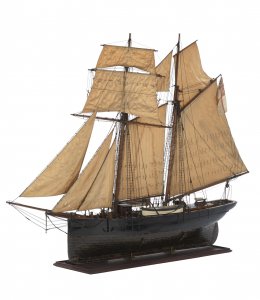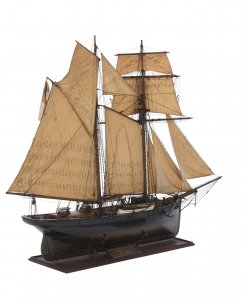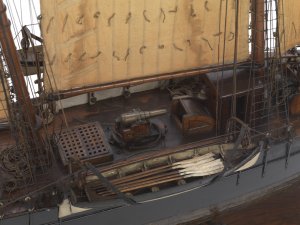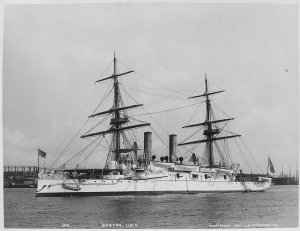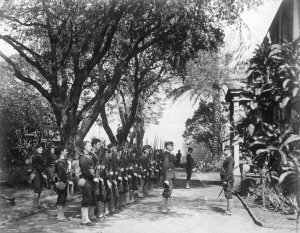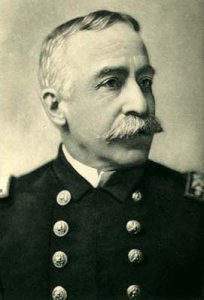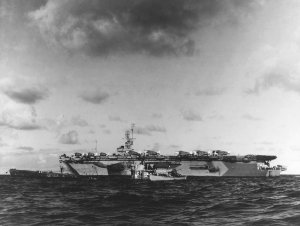Today in Naval History - Naval / Maritime Events in History
15 January 1814 - Cutter of HMS Castor (32), Cptn. Charles Dilkes, took L'Heureux (1) under the guns of Montjui.
HMS Castor was a 32-gun Amazon-class fifth-rate frigate of the Royal Navy. She served during the French Revolutionary and Napoleonic Wars. The French briefly captured her during the Atlantic Campaign of May 1794 but she spent just 20 days in French hands as a British ship retook her before her prize crew could reach a French port. Castor eventually saw service in many of the theatres of the wars, spending time in the waters off the British Isles, in the Mediterranean and Atlantic, as well as the Caribbean.
Construction and commissioning
Castor was ordered on 30 January 1782 and laid down in January the following year at the yards of the shipbuilder Joseph Graham, of Harwich. She was launched on 26 May 1785 and completed by July the following year. The ship was then laid up in ordinary at Chatham Dockyard.
Class and type: 32-gun Amazon-class fifth-rate frigate
Tons burthen: 680 (bm)
Length:
Draught: 9 ft (2.74 m)
Depth of hold: 12 ft 2 in (3.71 m)
Sail plan: Full-rigged ship
Complement: 220
Armament:
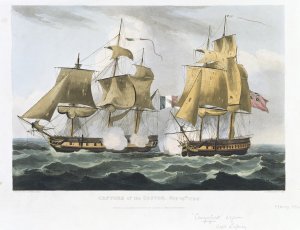
Hand-coloured. The Castor, a British vessel captured by the French (and flying French colours) is shown on the left of the picture, just before her re-capture by the British vessel Carysfort.
Career
Early years
Castor spent nearly five years in ordinary until the Spanish Armament of 1790 caused her to be fitted out at Chatham between June and August 1790 for the sum of £2,795. She commissioned in July that year under Captain John S. Smith, but the easing of international tensions caused Castor to be paid off later that year. The rising tensions with France immediately prior to the outbreak of the French Revolutionary Wars led the Admiralty to again prepare Castor for active service. She was fitted at Chatham between February and April 1793 for £4,066, recommissioning that February under Captain Thomas Troubridge.
French Revolutionary Wars and capture
Further information: Frigate action of 29 May 1794
Troubridge sailed for the Mediterranean on 22 May 1793, where in June she and HMS Mermaid captured a 14-gun privateer. Castor was then part of Admiral Hood's fleet at Toulon. While Castor was escorting a convoy back to Britain, on 9 May 1794 a French squadron under Rear-Admiral Joseph-Marie Nielly chased and captured her off Cape Clear. A French prize crew then sailed her back towards France. Twenty days later, on 29 May, Francis Laforey's HMS Carysfort sighted Castor off Land's End and recaptured her. Castor was re-registered as a naval ship on 6 November and recommissioned in January 1795 under Captain Rowley Bulteel.[3] Bulteel took her to the Mediterranean in May 1795, but paid her off in September 1796.
Castor underwent a refit at Plymouth between November 1798 and March 1799, recommissioning under Captain Edward Leveson Gower. In March 1799 a quantity of the gunpowder stores were accidentally ignited, causing severe injury to one of Castor's midshipmen. The injured man having been replaced, Captain Gower sailed Castor to Newfoundland in April 1799, but by December that year Castor was on the Spanish coast when she captured the 2-gun privateer Santa Levivate y Aninimus off Oporto on Christmas Day 1799. Captain David Lloyd took command of Castor in 1801, but he was soon succeeded by Captain Bernard Hale who sailed for the West Indies in April 1801. Hale died in 1802; his successor Captain Richard Peacocke continued to command Castor in the West Indies.
West Indies and Caribbean
Castor returned home, and was fitted out as a guardship for Liverpool between August and October 1803. She came initially under the command of Captain Edward Brace, but by April 1805 she had been moved to Sheerness, where she recommissioned under Captain Joseph Baker. She spent between 1806 and 1809 undergoing a repair and refit, before she came under the command of Captain William Roberts. On 27 March 1808 her boats, along with those of HMS Ulysses, HMS Hippomenes and HMS Morne Fortunee made an unsuccessful attempt to cut out the 16-gun French Griffon from Port Marin, Martinique.
In April 1809, a strong French squadron arrived at the Îles des Saintes, south of Guadeloupe. There they were blockaded until 14 April, when a British force under Major-General Frederick Maitland invaded and captured the islands. Castor was among the naval vessels that shared in the proceeds of the capture of the islands.[Note 1] Castor was next involved in the chase on 16 and 17 April 1809 of the 74-gun French ship of the line Hautpoult off Puerto Rico.
Mediterranean and final years
Captain Charles Dilkes took command in October 1810, and Castor spent 1811 and 1812 on the Leeward Islands and Jamaica stations. She moved to the Mediterranean in late 1812, and on 22 June 1813 captured the 2-gun privateer Fortune off the Catalan coast. She captured two other privateers, the one gun Heureux and Minute (or Minuit), off Barcelona on 22 or 25 January 1814.
Fate
Castor was finally laid up in August 1815 in Portsmouth at the conclusion of the Napoleonic Wars. The Admiralty sold her for breaking up on 22 July 1819 to G. Bailey for the sum of £2,650.
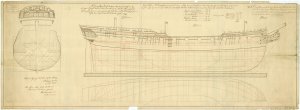
lines & profile Date: NMM, Progress Book, volume 5, folio 245, states that 'Andromache' was begun in June 1780 at Adams & Barnard on the River Thames. She was launched 17 Nvoember and sent to Deptford Dockyard for fitting. It is likely to be her as 'Ambuscade' was launched in 1773.
The Amazon-class frigates of 1773, made up of 32-gun fifth rates with a main battery of 12-pounder guns.
It comprised eighteen ships; Amazon, Ambuscade and Thetis were launched in 1773; the second batch - Cleopatra, Amphion, Orpheus, Juno, Success, Iphigenia, Andromache, Syren, Iris, Greyhound, Meleager, Castor, Solebay, Terpsichore and Blonde - were launched in 1779 to 1787
Amazon (Thetis) class 32-gun fifth rates 1773-87; 18 ships, designed by John Williams.
https://en.wikipedia.org/wiki/HMS_Castor_(1785)
https://en.wikipedia.org/wiki/Amazon-class_frigate_(1773)
15 January 1814 - Cutter of HMS Castor (32), Cptn. Charles Dilkes, took L'Heureux (1) under the guns of Montjui.
HMS Castor was a 32-gun Amazon-class fifth-rate frigate of the Royal Navy. She served during the French Revolutionary and Napoleonic Wars. The French briefly captured her during the Atlantic Campaign of May 1794 but she spent just 20 days in French hands as a British ship retook her before her prize crew could reach a French port. Castor eventually saw service in many of the theatres of the wars, spending time in the waters off the British Isles, in the Mediterranean and Atlantic, as well as the Caribbean.
Construction and commissioning
Castor was ordered on 30 January 1782 and laid down in January the following year at the yards of the shipbuilder Joseph Graham, of Harwich. She was launched on 26 May 1785 and completed by July the following year. The ship was then laid up in ordinary at Chatham Dockyard.
Class and type: 32-gun Amazon-class fifth-rate frigate
Tons burthen: 680 (bm)
Length:
- 126 ft (38.4 m) (overall)
- 104 ft (31.7 m) (keel)
Draught: 9 ft (2.74 m)
Depth of hold: 12 ft 2 in (3.71 m)
Sail plan: Full-rigged ship
Complement: 220
Armament:
- As built:
- UD: 26 × 12-pounder guns
- QD: 4 × 6-pounder guns + 4 × 18-pounder carronades
- Fc: 2 × 6-pounder guns + 2 × 18-pounder carronades
- After 1809:
- UD: 22 × 32-pounder carronades
- QD: 2 × 6-pounder guns + 4 × 32-pounder carronades
- Fc: 2 × 12-pounder guns + 2 × 32-pounder carronades

Hand-coloured. The Castor, a British vessel captured by the French (and flying French colours) is shown on the left of the picture, just before her re-capture by the British vessel Carysfort.
Career
Early years
Castor spent nearly five years in ordinary until the Spanish Armament of 1790 caused her to be fitted out at Chatham between June and August 1790 for the sum of £2,795. She commissioned in July that year under Captain John S. Smith, but the easing of international tensions caused Castor to be paid off later that year. The rising tensions with France immediately prior to the outbreak of the French Revolutionary Wars led the Admiralty to again prepare Castor for active service. She was fitted at Chatham between February and April 1793 for £4,066, recommissioning that February under Captain Thomas Troubridge.
French Revolutionary Wars and capture
Further information: Frigate action of 29 May 1794
Troubridge sailed for the Mediterranean on 22 May 1793, where in June she and HMS Mermaid captured a 14-gun privateer. Castor was then part of Admiral Hood's fleet at Toulon. While Castor was escorting a convoy back to Britain, on 9 May 1794 a French squadron under Rear-Admiral Joseph-Marie Nielly chased and captured her off Cape Clear. A French prize crew then sailed her back towards France. Twenty days later, on 29 May, Francis Laforey's HMS Carysfort sighted Castor off Land's End and recaptured her. Castor was re-registered as a naval ship on 6 November and recommissioned in January 1795 under Captain Rowley Bulteel.[3] Bulteel took her to the Mediterranean in May 1795, but paid her off in September 1796.
Castor underwent a refit at Plymouth between November 1798 and March 1799, recommissioning under Captain Edward Leveson Gower. In March 1799 a quantity of the gunpowder stores were accidentally ignited, causing severe injury to one of Castor's midshipmen. The injured man having been replaced, Captain Gower sailed Castor to Newfoundland in April 1799, but by December that year Castor was on the Spanish coast when she captured the 2-gun privateer Santa Levivate y Aninimus off Oporto on Christmas Day 1799. Captain David Lloyd took command of Castor in 1801, but he was soon succeeded by Captain Bernard Hale who sailed for the West Indies in April 1801. Hale died in 1802; his successor Captain Richard Peacocke continued to command Castor in the West Indies.
West Indies and Caribbean
Castor returned home, and was fitted out as a guardship for Liverpool between August and October 1803. She came initially under the command of Captain Edward Brace, but by April 1805 she had been moved to Sheerness, where she recommissioned under Captain Joseph Baker. She spent between 1806 and 1809 undergoing a repair and refit, before she came under the command of Captain William Roberts. On 27 March 1808 her boats, along with those of HMS Ulysses, HMS Hippomenes and HMS Morne Fortunee made an unsuccessful attempt to cut out the 16-gun French Griffon from Port Marin, Martinique.
In April 1809, a strong French squadron arrived at the Îles des Saintes, south of Guadeloupe. There they were blockaded until 14 April, when a British force under Major-General Frederick Maitland invaded and captured the islands. Castor was among the naval vessels that shared in the proceeds of the capture of the islands.[Note 1] Castor was next involved in the chase on 16 and 17 April 1809 of the 74-gun French ship of the line Hautpoult off Puerto Rico.
Mediterranean and final years
Captain Charles Dilkes took command in October 1810, and Castor spent 1811 and 1812 on the Leeward Islands and Jamaica stations. She moved to the Mediterranean in late 1812, and on 22 June 1813 captured the 2-gun privateer Fortune off the Catalan coast. She captured two other privateers, the one gun Heureux and Minute (or Minuit), off Barcelona on 22 or 25 January 1814.
Fate
Castor was finally laid up in August 1815 in Portsmouth at the conclusion of the Napoleonic Wars. The Admiralty sold her for breaking up on 22 July 1819 to G. Bailey for the sum of £2,650.

lines & profile Date: NMM, Progress Book, volume 5, folio 245, states that 'Andromache' was begun in June 1780 at Adams & Barnard on the River Thames. She was launched 17 Nvoember and sent to Deptford Dockyard for fitting. It is likely to be her as 'Ambuscade' was launched in 1773.
The Amazon-class frigates of 1773, made up of 32-gun fifth rates with a main battery of 12-pounder guns.
It comprised eighteen ships; Amazon, Ambuscade and Thetis were launched in 1773; the second batch - Cleopatra, Amphion, Orpheus, Juno, Success, Iphigenia, Andromache, Syren, Iris, Greyhound, Meleager, Castor, Solebay, Terpsichore and Blonde - were launched in 1779 to 1787
Amazon (Thetis) class 32-gun fifth rates 1773-87; 18 ships, designed by John Williams.
- HMS Thetis 1773 - ran onto a rock and sank near Saint Lucia on 12 May 1781.
- HMS Amazon 1773 - broken up in 1794.
- HMS Ambuscade 1773 - taken by the French corvette Bayonnaise in 1798, retaken by HMS Victory in 1803, broken up 1810.
- HMS Cleopatra 1779 - broken up 1814.
- HMS Amphion 1780 - accidentally caught fire and blew up at Portsmouth on 22 September 1796.
- HMS Orpheus 1780 - wrecked on a coral reef in the West Indies on 23 January 1807.
- HMS Juno 1780 - broken up 1811.
- HMS Success 1781 - taken by the French in the Mediterranean on 13 February 1801, retaken seven month later by HMS Pomone on 2 September, converted to troopship in 1812, hulked as prison ship at Halifax in 1813, broken up in 1820.
- HMS Iphigenia 1780 - hulked as prison hospital ship at Plymouth in 1798, converted to troopship in 1801, accidentally burnt in the same year.
- HMS Andromache 1781 - broken up 1811.
- HMS Syren (or Siren) 1782 - hulked as lazaretto at Pembroke in 1805, broken up in 1822.
- HMS Iris 1783 - on lease to Trinity House between 1803 and 1805, hulked as receiving ship at Yarmouth in 1811, presented to the Marine Society as a training ship, broken up in 1833.
- HMS Greyhound 1783 - wrecked in the Philippines on 4 October 1808.
- HMS Meleager 1785 - wrecked on Triangle Bank in the Gulf of Mexico on 9 June 1801.
- HMS Castor 1785 - sold 1819.
- HMS Solebay 1785 - on lease to Trinity House from 1803 to 1806, wrecked in action with a Senegalese fort on 11 June 1809.
- HMS Terpsichore 1785 - hulked as receiving ship at Chatham in 1811, broken up 1813.
- HMS Blonde 1787 - hulked for stationary service at Portsmouth in 1803, sold 1805.
https://en.wikipedia.org/wiki/HMS_Castor_(1785)
https://en.wikipedia.org/wiki/Amazon-class_frigate_(1773)




